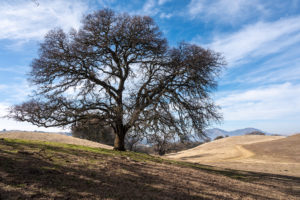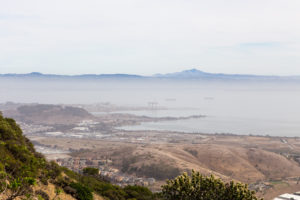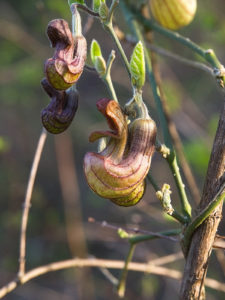Lech Naumovich is the conservation analyst for the California Native Plant Society – East Bay, and the founding director of Golden Hour Restoration Institute, a botanical/ecological nonprofit field studies organization. He promotes conservation in the East Bay by providing reliable scientific information to the general public, public officials, and decision makers on plant and natural habitat conservation issues. Lech also serves as a steering committee member for the Upland Habitat Goals Project in his role as a member of the Vegetation group, and he’s a member of the Bay Area Open Space Council’s stewardship committee. He’s committed to using his experience, starting with his graduate degree in environmental science from the Yale School of Forestry and Environmental Studies, to pursue a career that balances field research and conservation advocacy. In his spare time, Lech enjoys outdoor activities such as climbing, biking, backpacking, and photography.
BN: Are you a Bay Area native?
LN: No, I grew up in the Midwest and attended college at the University of Wisconsin. I’ve lived in a number of fantastic places over the past 12 years including the Wasatch Mountains in Utah; Denver, Colorado; New Haven, Connecticut; Wroclaw, Poland; and Chicago, Illinois. I’ve made my home in the greater Bay Area — including Monterey — for the past seven-and-a-half years.
BN: What drew you to the Bay Area?
LN: I’ve always been drawn to the quintessential “California” lifestyle. On a climbing trip in 1999 I visited Yosemite and San Francisco, which got me excited about living in a place where people have active-adventurous lifestyles, liberal mindsets, and openness to many different cultures and ideas. The Bay Area seemed to fit that bill pretty darn well.
BN: What’s your favorite Bay Area place?
LN: It depends. I love to road bike, and Palomares Canyon is one of the most outstanding bike rides out there. From there I can easily ride to Sunol, and farther south to the Diablo Range around Mount Hamilton, which is my favorite place to explore on foot. Though the area around Mount Hamilton is largely a private landscape, its “wilderness values” are still intact, meaning the plants and animals there are as special as those you can find anywhere in California. And within the bounds of the East Bay Regional Parks District, the botanical resources are truly a treasure — from the botanic garden at Tilden to the rare endemics around Mount Diablo, the Park District offers wonderful access to these resources.
BN: What is your passion?
LN: Conservation of plant resources in the Bay Area! Our East Bay is home to nearly 2,000 plant taxa — some highly endemic and rare. I love the opportunity to get into an area otherwise closed to the public and explore it “for the first time” with botanical insight.
Nearly one quarter of all native plant species of California can be found in Alameda and Contra Costa counties. The botanical diversity here is just amazing. But it takes more than just cameras and fences to protect plants — they often require specific management treatments and stewardship. This may seem counterintuitive, but most plants and plant communities require some form of disturbance to maintain their population and genetic vigor. Many land managers don’t understand the extent to which some intervention is needed, whether with fire, grazing, soil disturbance, top soil removal, or invasive weed management. So the public needs to make an about-face, to embrace the fact that our landscapes need attention and care.
Therefore, my mission and work with CNPS — and as a private consultant — is to help find, catalog, and figure out how to protect the diversity of these resources in a world of rampant concrete mixers, invasive species, dry nitrogen deposition, and a restriction on landscape-scale management tools (e.g. controlled burns, large ungulates, etc), and my goal is to raise awareness and resources so that we can continue to manage our native flora wisely.
BN: What’s your balance of field time to office time?
LN: Well, I consider this my greatest asset as a conservation ecologist. If I’m not spending at least half my year outside, then I’m not going to be able to provide the insight and knowledge that takes any project from “pretty good” to “great.” I hope I will never have to drive a desk full-time, since my value and expertise comes from synthesizing what’s really happening in the outdoors with what planners believe is the outdoors. You can’t have a successful long-distance relationship with nature.

.jpg)



